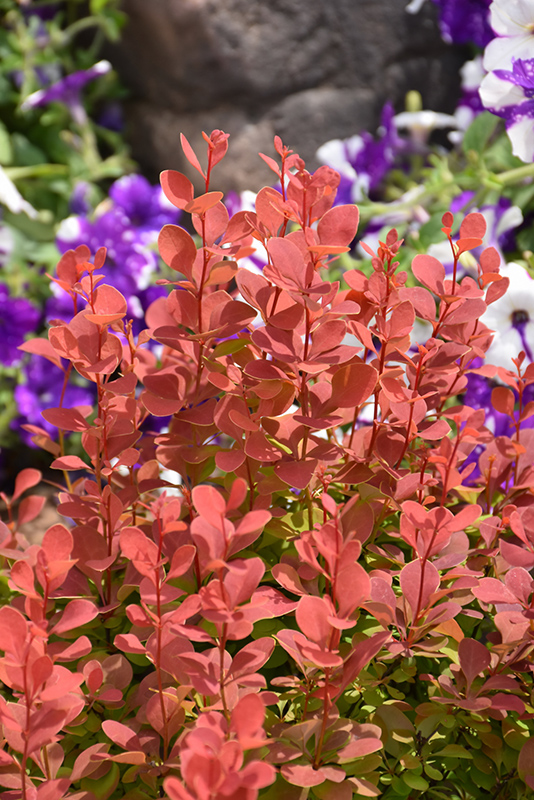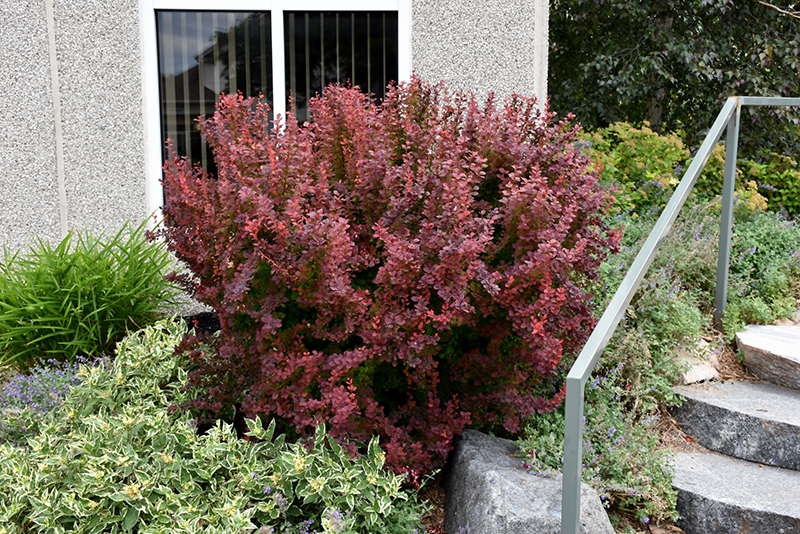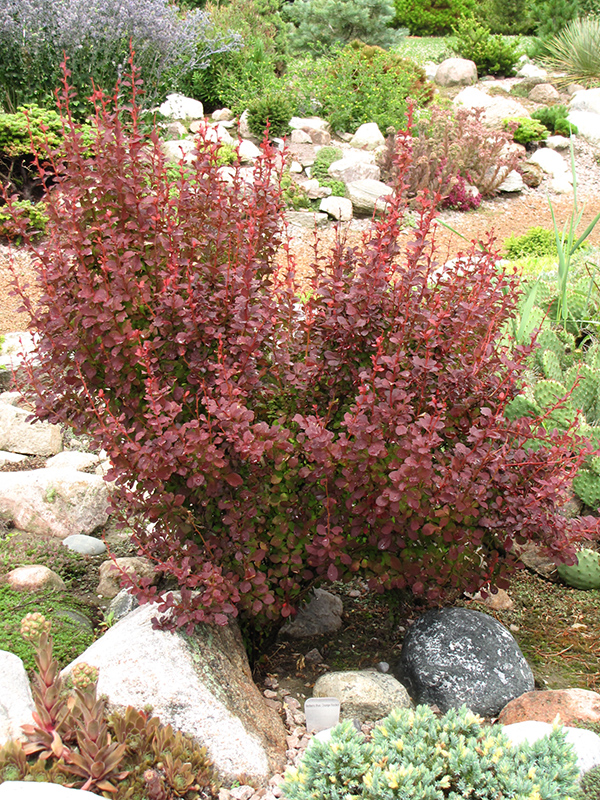Barberry (Japanese), Orange Rocket Berberis thunbergii 'Orange Rocket' Height: 4 feet Spread: 24 inches
Sunlight:
Hardiness Zone: 4b Description: A beautiful shrub for bringing color into the landscape; rich scarlet red foliage fades to a soft orange-red all season long, finally turning to brilliant crimson red in fall, also has attractive flowers and showy red fruits after the leaves fall Ornamental Features Barberry (Japanese), Orange Rocket is primarily grown for its highly ornamental fruit. The fruits are showy crimson drupes carried in abundance from early to late fall. It has attractive salmon deciduous foliage which emerges red in spring. The small oval leaves are highly ornamental and turn an outstanding ruby-red in the fall. It features tiny clusters of buttery yellow flowers hanging below the branches in mid spring. Landscape Attributes Barberry (Japanese), Orange Rocket is a dense multi-stemmed deciduous shrub with a more or less rounded form. Its relatively fine texture sets it apart from other landscape plants with less refined foliage. This is a relatively low maintenance shrub, and can be pruned at anytime. Deer don't particularly care for this plant and will usually leave it alone in favor of tastier treats. Gardeners should be aware of the following characteristic(s) that may warrant special consideration; Barberry (Japanese), Orange Rocket is recommended for the following landscape applications; Planting & Growing Barberry (Japanese), Orange Rocket will grow to be about 4 feet tall at maturity, with a spread of 24 inches. It tends to fill out right to the ground and therefore doesn't necessarily require facer plants in front. It grows at a fast rate, and under ideal conditions can be expected to live for approximately 20 years. This shrub does best in full sun to partial shade. It does best in average to evenly moist conditions, but will not tolerate standing water. This plant should be periodically fertilized throughout the active growing season with a specially-formulated acidic fertilizer. It is not particular as to soil type or pH, and is able to handle environmental salt. It is highly tolerant of urban pollution and will even thrive in inner city environments. This is a selected variety of a species not originally from North America.![]()
![]()
![]()
![]()
![]()
![]()
![]()
![]()
![]()
![]()
![]()
![]()
![]()
![]()



